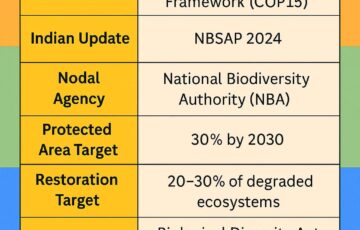Lake Chad
News: The risky connection between climate change and violence in nations like Cameroon, Chad, Niger, and Nigeria in the Lake Chad Basin has been emphasised in a report by the humanitarian organisation Refugees International.
- Reduced natural resources brought on by unfavourable weather are displacing people and escalating conflicts within communities.
- An extra 11 million people require humanitarian aid, and there have been about 3 million displaced persons.
- The Lake Chad is a sizable body of freshwater surrounded by sand dunes that spans four nations: Nigeria, Cameroon, Niger, and Chad.
- According to paleography, the environmental conditions in Lake Chad have been changing over time.
- It is an endorheic lake that is primarily nourished by the waterways of Logone Chari and Komadougou.
- This ecosystem has a wide range of wet zones, including open water, polders, and transient or permanent ponds, some of which are natron-rich.
- A complicated network of meanders, some of which are planted, connects the water and sand deserts in the area surrounding the lake.
- Wide floodplains on the river’s banks are exposed by receding waters during the dry season.
- In the far northeastern region of Nigeria, between the states of Borno and Yobe, is where you’ll find the Chad Basin National Park (Lake Chad Nigeria Section).
- The Park is typically represented as being in the well-known Lake Chad’s traditional basin, which is actually quickly diminishing.
- The sole remaining giraffe and ostrich habitat in Nigeria is in the Chad Basin.
- The ecosystem around Lake Chad features an amazing mosaic of plant formations that create numerous biotopes, oasis, and wet zones that are significant on a global scale.
- The Lake Chad and its islands continue to preserve the natural morphology that shaped the cultural landscape where human settlements have grown.
- The Waza National Park in the Republic of Cameroon to the east and the Chad Basin National Park have a similar ecology.




